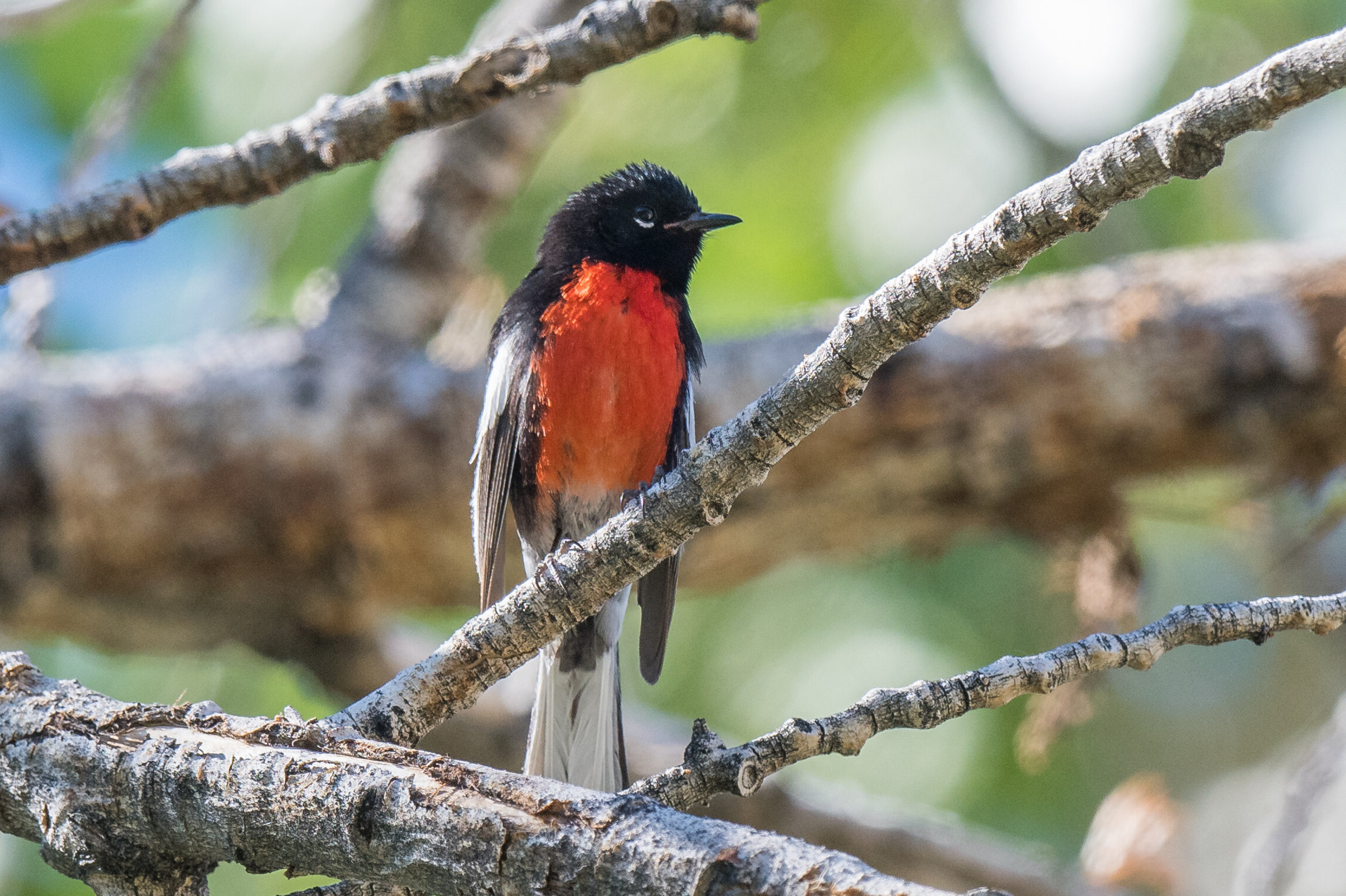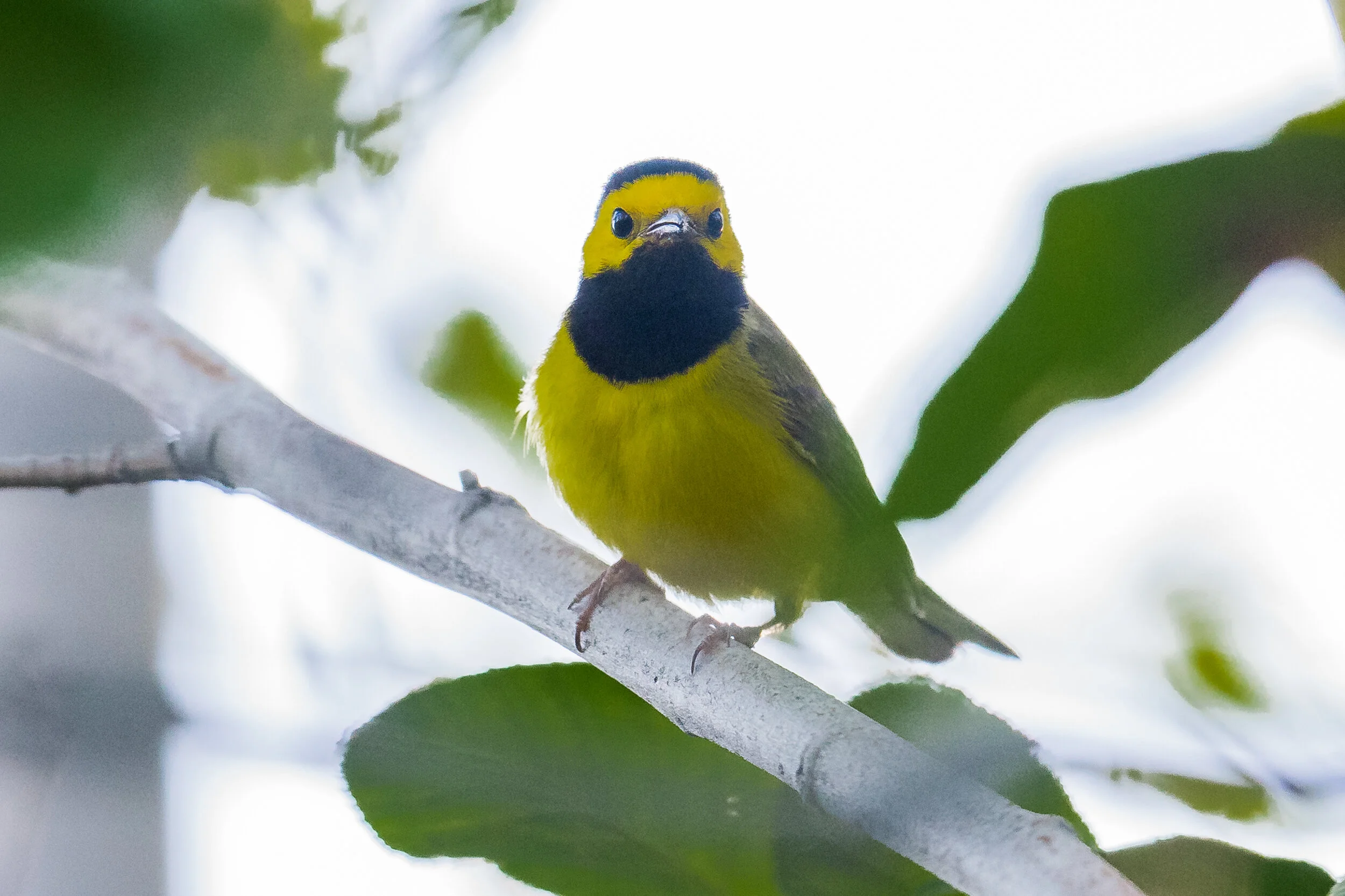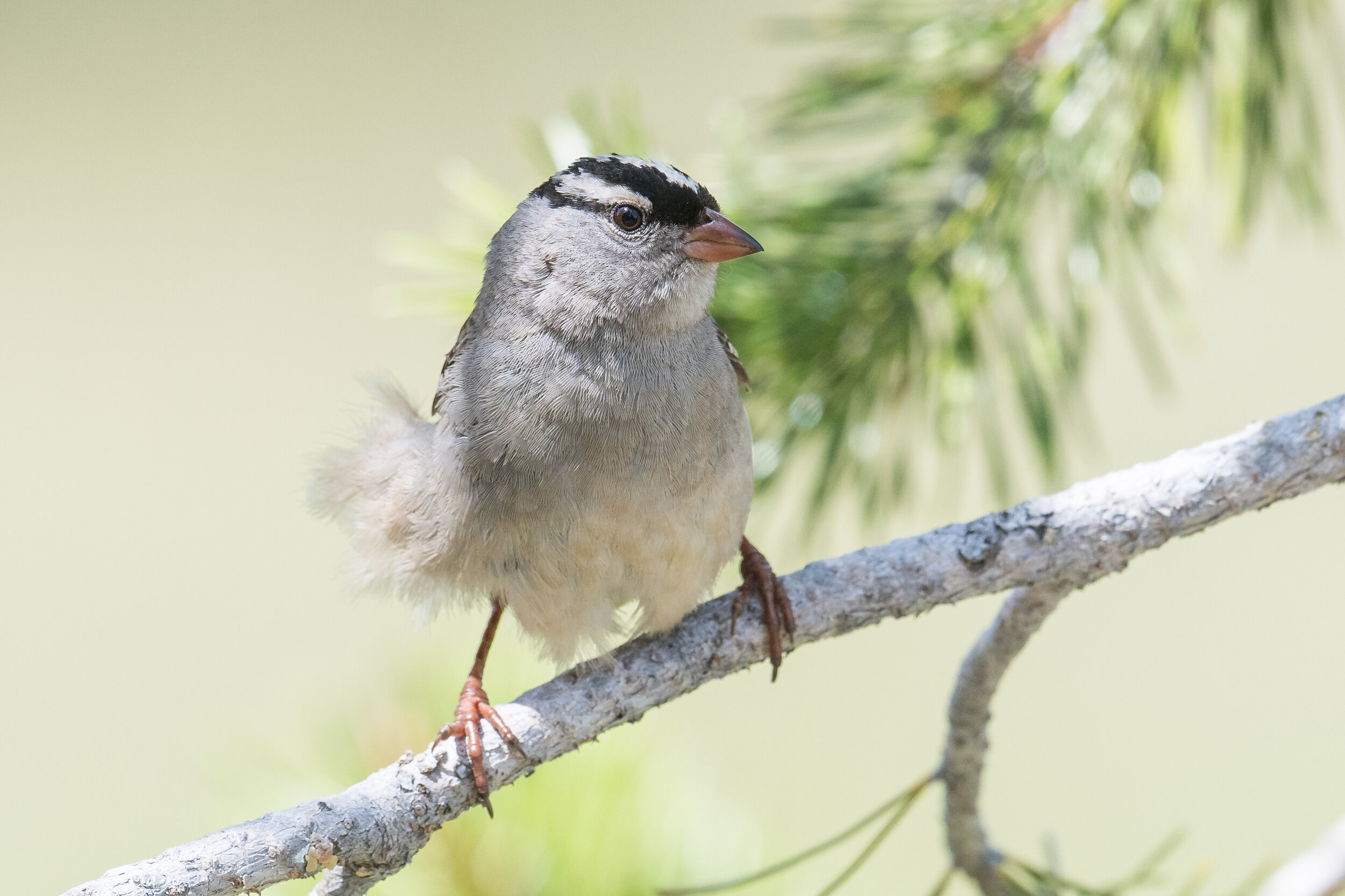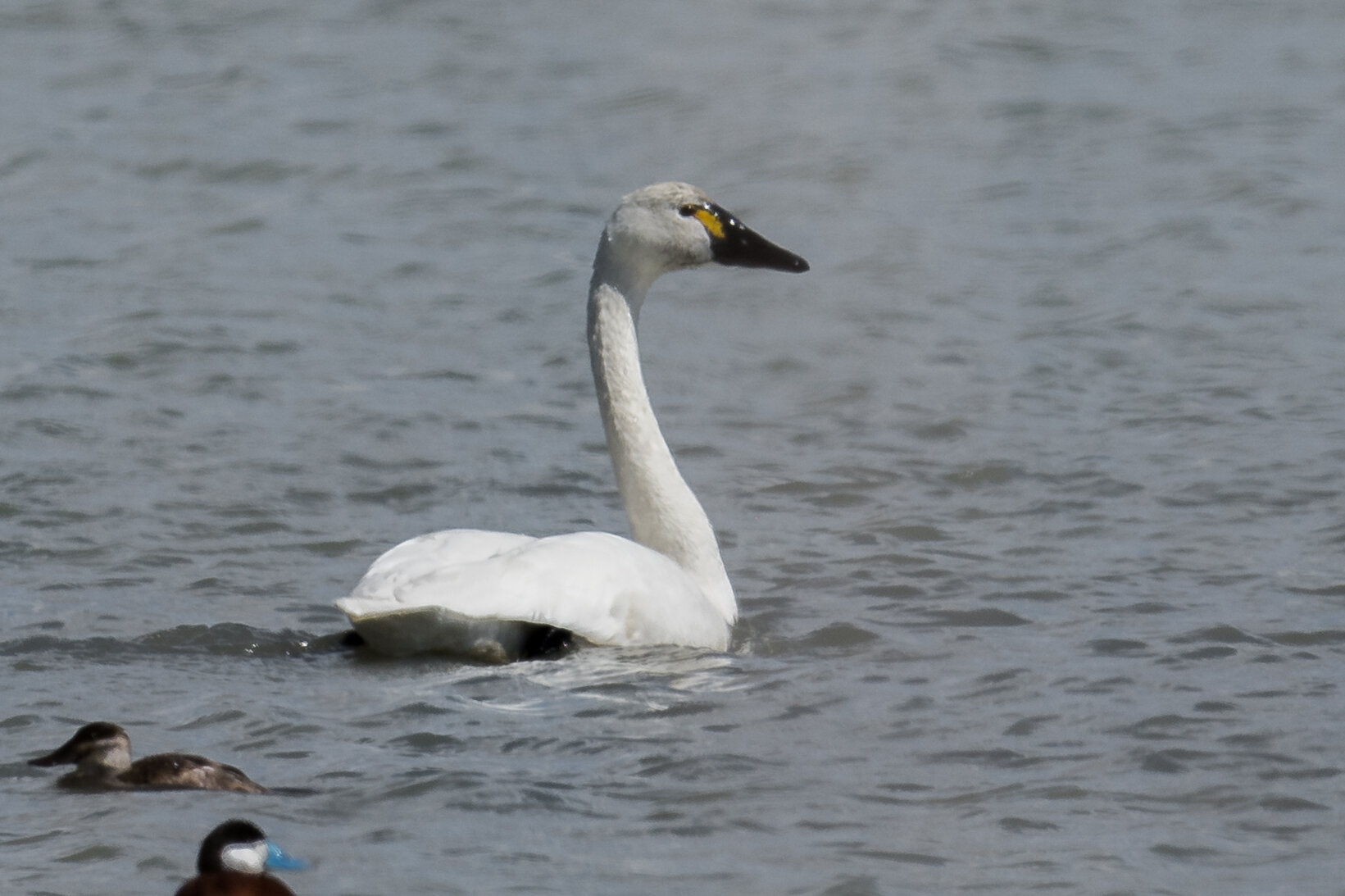Featured Photo: Ovenbird (Seiurus aurocapilla), Evans Creek, WAS (NV)
EQ: D850, 500mm f/4 Taken: 5-15-2020 at 8:34
Settings: 500mm (35mm eqv), 1/1250s, f/5.6, ISO640, 1/3EV, Conditions: Shade
This year was great for rare spring migrants passing through the Reno Nevada area. The birds in this blog I had photographed all less than an hour from my home below Mt Rose SW of Reno, Nevada. I used the ebird.org database to establish how rare the birds where based on the number of reports over the last 20 years. The rarest for Washoe County (WAS) was this Ovenbird, which was a first ebird report for the County (WAS) with another one seen in 2015 in Douglas County (DOU). I was searching for a Hooded Warbler reported in Rancho San Rafael Park, which I did find (more on that later) so I headed to the Evans Creek Nature Trail. I was searching on a side trail and I looked up and instantly knew I was looking at an Ovenbird. I usually use auto ISO when I’m in wooded area since I am going in and out of shade to full sun. I was able to fire off about 10 shots before trying to get a better vantage point but I never found it again. I usually have my shutter speed at 1/1250 and an f-stop of f/5.6 and with that the ISO 640 was set by the camera. The Ovenbird is mainly an eastern bird with those breeding east of the Appalachians over wintering in Florida and the Caribbean, while those breeding westerly and into Canada fly to Mexico and Central America. They do show up along the west coast and so this one flew up the wrong side of the Sierras most likely from Mexico.
Ovenbird (Seiurus aurocapilla), Evans Creek, WAS (NV) (ebird reports in 2015 and 2020)
Two other migrants were a Painted Redstart see just south of Virginia City and Hooded Warblers one in Reno and a pair seemed to be breeding at Dayton State Park, which is east of Carson City. Both of these birds were the first reports on ebird for the Washoe and Carson Valley area. The Redstart inhabits central Mexico and parts of Central America and it migrates north into Northern Mexico, Arizona and New Mexico. The birders in the area , at least me, were surprised to find this rare migrant this far north.
Painted Redstart (Myioborus pictus), 6 Mile Canyon Road, STO (NV) (ebird report in 2020)
Painted Redstart (Myioborus pictus), 6 Mile Canyon Road, STO (NV)
The Hooded Warbler is another eastern bird that migrates at night and crosses the Gulf Mexico in spring from its wintering grounds along the east coast of Central America and they return by land through Texas in the fall.
Hooded Warbler (Setophaga citrina), Rancho San Rafael, WAS (NV) (ebird report in 2020)
Hooded Warbler (Setophaga citrina), Rancho San Rafael, WAS (NV)
Hooded Warbler (Setophaga citrina), Dayton SP, LYO (NV)
Hooded Warbler (Setophaga citrina), Dayton SP, LYO (NV)
The next rarest bird was this Dark-eyed Junco subspecies Pink-sided with another reported sighting in 2010. I was looking for a Harris’ Sparrow, which I did find when I noticed a different looking Junco. This Junco is usually found from Arizona through Colorado and north into Montana.
Dark-eyed Junco, Pink-sided (Junco hyemalis mearnsi), Glendale Park, WAS (NV) (ebird reports in 2010 and 2020)
Dark-eyed Junco, Pink-sided (Junco hyemalis mearnsi), Glendale Park, WAS (NV)
The Eastern Phoebe by it’s name is an eastern bird that winters in the lower eastern US through Texas and into Mexico. Early to migrant and it breeds from the northern east coast into the Midwest and as far north into the Northwest Territory of Canada. This was the second report with another in the same area around Carson City Park in 2017.
Eastern Phoebe (Sayornis phoebe), Carson River Park, CAR (NV) (ebird reports in 20017 and 2020)
Eastern Phoebe (Sayornis phoebe), Carson River Park, CAR (NV)
The Trumpeter Swan was report twice in the area once in 2017 and in November 2019. These birds breed along the coast of Alaska and Canada and migrates to ice-free waters in the Pacific Northwest and British Columbia. They winter in Montana, Wyoming, and Idaho. There are populations between the Sierras and the Rockies that may not migrate at all. The Trumpeter Swan was near extinction but has expanded their range in recent years, which could explain the recent sighting in Washoe County over the last couple years.
Trumpeter Swan (Cygnus buccinator), Damonte Ranch, WAS (NV) (ebird reports in 2017 and 2019)
After I saw the Pink-sided Junco I found the Harris’s Sparrow but it took some searching. My first sighting was in 2008 at Pyramid Lake and last year I saw on in NW Reno. They have showed up 3 years in a row from 2005-2007 so we shall see if you shows up in 2021.
Harris's Sparrow (Zonotrichia querula), Glendale Park, WAS (NV) (ebird reports in 2005-2007 and 2018-2020)
Harris's Sparrow (Zonotrichia querula), Glendale Park, WAS (NV)
The Black-and-white Warbler was a new NV State bird for me and I saw it east of Carson City at Empire Ranch. The person that spotted it sent the CPS coordinates the NVBirds Listserve. When I looked down at my map, when I was close to the area, I was right on top of the spot. Then within a few seconds I saw a black and white flash by me and a bit later the guy popped out right in from of me. Nice when that happens.
Black-and-white Warbler (Mniotilta varia), Empire Ranch, CAR (NV) (ebird reports in 2001, 2005, 2009-2010, 2013, 2015, 2020)
Black-and-white Warbler (Mniotilta varia), Empire Ranch, CAR (NV)
Although still considered rare for the area, one or 2 have shown up for the last 5 years and I even had one spend 8 weeks at my home in 2018. As I write this July 19, 2020 I just spotted a male at my feeder.
Costa's Hummingbird (Calypte costae), Canyon Way - Long Valley Creek, STO (NV) (ebird reports in 2007-2008, 2016-2020)
Costa's Hummingbird (Calypte costae), Mont Pelier, WAS (NV) (2018)
Another somewhat rare bird is the Mew Gull and one or two have shown up in the area for the past 7 years and most reports have been at the Sparks Marina.
Mew Gull (Larus canus), Sparks Marina, WAS (NV) (ebird reports in 2013, 2015-2020)
Mew Gull (Larus canus), Sparks Marina, WAS (NV)
The Northern Shrike has visited the area on and off since 2005. The Hooded Oriole is a more regular rare bird to the Reno Area and the one below spent some time around the bridge over the Truckee River in Mogul.
Northern Shrike (Lanius borealis), Antelope Valley - West, WAS (NV) (ebird reports in 2002, 2004-2005, 2007, 2012, 2014, 2020)
Northern Shrike (Lanius borealis), Antelope Valley - West, WAS (NV)
Hooded Oriole (Icterus cucullatus), Mogul Bridge over Truckee, WAS (NV) (ebird reports in 2005-2007, 2010-2011, 2013-2017, 2019-2020
Hooded Oriole (Icterus cucullatus), Mogul Bridge over Truckee, WAS (NV)
The Purple Finch has been a regular over the last 5 years since 2016 and have been increasing in numbers. They have been sighted in at least 4 areas in Reno and Verdi.
Purple Finch (Haemorhous purpureus), Rancho San Rafael, WAS (NV) (ebird reports in 2014, 2016-2020)
Purple Finch (Haemorhous purpureus), Rancho San Rafael, WAS (NV)
Other rare birds are the Pileated Woodpecker and the White-crowned Sparrow, Dark-lored. The Pileated breeds around Lake Tahoe on the Nevada side and it is just outside its typical range. The WC Sparrow is considered rare for the area; however, I have seen them in high numbers in the Tahoe Meadows area just west of the Mt Rose Ski Resort. They breed in this area and it is the only WC Sparrow I’ve seen in this area.
Pileated Woodpecker (Dryocopus pileatus), Chimney Beach, WAS (NV) (ebird reports in 2003-2004, 2007, 2010-2020)
White-crowned Sparrow, Dark-lored (Zonotrichia leucophrys leucophrys/oriantha), Tahoe Meadows, WAS (NV)
Some rarities and due to being an early or late migrant. This Tundra Swan I saw on 4-1-20 and it was a little behind its time in the spring migration as well as the Semipalmated Plover I saw on 5-21-20 both at Swan Lake.
Tundra Swan (Cygnus columbianus), Swan Lake, WAS (NV)
Semipalmated Plover (Charadrius semipalmatus), Swan Lake - Fleetwood, WAS (NV)
Semipalmated Plover (Charadrius semipalmatus), Swan Lake - Fleetwood, WAS (NV)
Not considered rare for the area, according to ebird, the Sandhill Crane is not common at all. A pair have been breeding in this marsh area, which is along Hwy 580 in the Washoe Valley just west of Washoe Lake. Both times I have seen them here they had young and this year I saw only one juvenile.
Sandhill Crane (Antigone canadensis), Washoe Valley, WAS (NV)
The Virginia Rail is fairly common for the area in the appropriate habitat but what makes this rare for me is actually seeing them and this one was less than 10m from me. I think I hear 15 to 20 for everyone I see and it is even rarer to see them this close and being able to photographing them. Remember that all birds are rare somewhere.
Virginia Rail (Rallus limicola), Rancho San Rafael, WAS (NV)
Virginia Rail (Rallus limicola), Rancho San Rafael, WAS (NV)
Your comments are welcomed and if you have any questions about these photos or any other leave me a message.



































